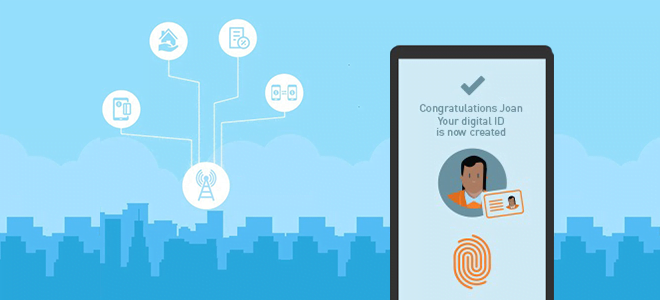Having tracked the development of digital identity solutions over several years, John Devlin assesses how providers must evolve and embrace new features to ensure sustainable revenue growth continues.
Digital Identity Verification Will Become Commoditised
Verification is the first step and provides an instant win for service providers, especially given the increasing shift to digital service offerings evidenced in many sectors. However, verification is an increasingly competitive market as more entrants compete to win and serve new customers. Biometric solutions are becoming established as “standard” and more easily available, giving providers less room to differentiate.

Solutions like Thales’ Trusted Digital Identity can establish seamless and entirely digital customer journeys.
Inevitably, this will become a commoditised offering and we believe vendors are already preparing for this outcome. Partnerships play a role to both enhance the offerings with new features, such as NFC reading of credentials, access to wider data sources, or enhanced liveness detection to combat deepfakes and identity theft. Acquisitions can also achieve this while simultaneously growing developers’ geographic reach and ability to address more vertical sectors.
Future Value Will Come from Deeper Digital Identity Capabilities
In the not-too-distant future, offering verification will not be enough on its own. Stopping there would be miss to opportunities to further improve security and enhance the user experience, whether that is automated proof of address and background checks for a higher-level on-boarding service or measures to address fraud and ensure regulatory compliance. This will drive more acquisitions and developers to seek greater investment to allow them to add specialist capabilities and features to their portfolios which extend beyond verification.

American Airlines are one of VeriFly’s major partners
GB Group has just this week acquired Cloudcheck, a provider of electronic identity verification and anti-money laundering solutions based in New Zealand. This is on the back of the recent acquisition of Acuant (which in turn bought Hello Soda last summer). It can also now integrate mobile network operator data to provide more assurance to businesses. Jumio is offering more in-depth services, from on-boarding to on-going monitoring, from the initial verification of user identity to screening, monitoring and analytics of transactions and usage. Au10tix is offering electronic data verification and synthetic fraud detection. Innovatrics has developed its biometric capabilities into a seamless access control solution. Daon has built an impressive list of aviation and travel clients for its VeriFLY app, aided by the introduction of health and vaccination features. Yoti is offering automated age verification as part of its identity wallet and service portfolio. More service providers are building (or acquiring) new capabilities and tailoring their solutions to address deeper requirements for digital identity in more sectors.
Adoption of Digital Identity in More Verticals
Not all industries are moving at the same pace. Early focus was on large, regulated sectors, primarily banking and financial services. Over the past three years, this has grown more widespread and expanded as developers look to new markets and meet increased demand from more sectors looking to modernise and ensure service continuity via digital channels. This includes growing adoption in gaming/gambling, insurance, crypto, real estate, stadia and entertainment venues, car hire and mobility/transportation, telecoms, retail, government, education and healthcare.
Evolution Will Drive Adoption and Create New Revenue Opportunities
We are seeing rising adoption of biometrics in access control for enterprise use cases, offering a better, frictionless experience. The wider use of facial recognition offers a quicker seamless experience and pilots are up and running for more efficient and intelligent border control in Dubai, Canada and the USA. Integration of biometric authentication with payments for frictionless use of local transit systems in Russia and China are also underway.
Trusted on-boarding and verification is the first step for all these services, whether mobile, online or via an enrolment kiosk. However, it is the added value that the authentication and authorisation of transactions, with data, analytics and screening checks, which will really generate value. The added trust and reassurance will improve the user experience, push wider uptake, and increase frequency of use (as we have seen with the on-going development of mobile banking and payment apps). Service providers will feel more comfortable offering higher-level and more lucrative features, safe in the knowledge that users are who they say they are.
The end result? Less bureaucracy and administration. Improved efficiency driven by automation. More profitable service delivery. Greater customer satisfaction and loyalty.
About Us
In late 2021, P.A.ID Strategies joined forces with Valour Consultancy. Together, we provide insight and intelligence on payment, authentication, identity, security and connectivity applications, services, technologies, and vendors.
If you have an interest in related domains such as derived credentials or identity wallets and would like to discuss our research further, please contact our team.






